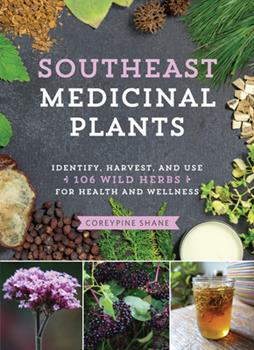By John M. Gillett and Norman L. Taylor, Michael Collins (Editor)
Reviewed by Jonathan O.C. Kubesch, University of Tennessee—Knoxville
Author’s Note: True clovers (Trifolium spp.) are the focus of this article. All scientific names abbreviate Trifolium to T.
The World of Clovers, by John M. Gillett and Norman L. Taylor (2001), is a fantastic primer on the global diversity of the genus Trifolium. Conceived in concert with a world seed collecting effort, Gillett and Taylor work to describe the many known species of this familiar genus. The global distribution of the genus is discussed and the book highlights origins for these species. Native clover species form intriguing distributions. This book covers details in morphological diversity beyond the traditional field guide using photographs. Notes cover the trivial and surprisingly nuanced characteristics of each species. In the 20 years following publication, some new information has developed about these species in the genus Trifolium. However, the book is a strong introduction for the botanist to explore a wider world of clovers.
This book is especially relevant to Kentucky botanists. Norman L. Taylor sought to collect every known species of clover and seed bank them in Lexington, KY. This work led to a framing of the genus (~230 species) with ever-expanding global coverage. Clovers are native to North and South America, Africa, Europe, and the Near East. Surprisingly, clovers are not native to Australia! The Great Plains and Coastal Plain have few native clovers, but the woodland-grassland mosaic of the Southeastern United States supports a handful of native species, such as the running buffalo (T. stoloniferum), Carolina (T. carolinianum), and running glade clovers (T. calcaricum) in addition to the introduced Eurasian species, such as red (T. pratense) and white clovers (T. repens).
The World of Clovers appeals across disciplines and levels. Gillett and Taylor seek to make the diagnostic information as accessible as possible, using common language to avoid a technical glossary. The description and photograph accompanying each species’ seed suits the conservation mission. The black-and-white images on the pages are complemented by an enclosed CD. Moving beyond the traditional field guide or agronomic factsheet, the book gives reproductive biology information. This reproduction section of each species entry suits efforts to propagate plants in cultivation or to encourage success in the wild. The number of cross-pollinated species draws additional attention to the plight of pollinators.
Clovers have served primarily as forages for wildlife and livestock. However, the horticultural benefits of these species also come to mind. The authors mention Kura clover and buffalo clover as two prominent candidates for their ornamental beauty. Of buffalo clover, as an extension of Norman Taylor’s personal fondness, Clovers says, “Many consider this species the most beautiful of the clovers….” In addition to the technical details, these small comments offer some humanity to the often impersonal business of plant sciences. New finds in the taxonomy of the clovers have led to the identification of a new species, Kentucky clover (T. kentuckiense), which is closely related to buffalo clover (T. reflexum)(Chapel and Vincent, 2013).
In 20 years of scientific and economic advancement the world of clovers has changed. Taylor passed in 2010, and his collection was split between Washington State and Georgia USDA seedbanks. Similarly, the use of clovers in agricultural settings has expanded to develop living mulch and perennial ground cover systems. Clovers will hopefully reduce the use of synthetic inputs in agricultural to the benefit of adjacent natural ecosystems.
Dr. Michael Vincent’s 2001 summary of Kentucky’s Trifolium, complements the World of Clovers in further detail on the 11 (now 12 due to the subsequent discovery of T. kentuckiense) species seen in Kentucky (Vincent, 2001). Clovers are part of the historical herbivory and current cropping of the state. This book is a limited description at the species level which the ecologist may apply in conjunction with similar guides on the KY flora.
The World of Clovers is useful to professional and citizen scientists because it encompasses the diversity of the genus. This book goes beyond the traditional field guide, but also comes in an accessible form for the everyday user. Clovers exist under cultivation as well as in Kentucky’s natural areas. The genus Trifolium has grown in a small degree in the time since publication, but the book offers wider coverage that serves both the hiker and horticulturalist.
Acknowledgements
Norman Taylor deserves special mention to his dedication in preserving the native clovers of Kentucky. This article is part of the ongoing efforts of the Kentucky Clover Recovery Team. Will Overbeck provided helpful suggestions and strong editorial contributions. Special thanks to David Barker, Daniel Boone, and Ken Quesenberry for recommending this book. Thanks to Sarah Grace Holland, for her supporting my native clover research.
References
Chapel, K. J., & Vincent, M. A. (2013). Trifolium kentuckiense (Fabaceae, Papilionoideae), a new species from Franklin and Woodford counties, Kentucky. Phytoneuron 2013-63: 1–6.Chapel and Vincent 2013.
Gillett, J. M., & Taylor, N. L. (2001). The World of Clovers. Ames, IA: Iowa State University Press.
Vincent, M.A. (2001). The genus Trifolium (Fabaceae) in Kentucky. J. Ky. Acad. Sci. 62(1):1-17.
Jonathan Omar Cole Kubesch is a graduate student pursuing a master’s degree in crop science at the University of Tennessee. He studied evolution and ecology—as well as agronomy—at the Ohio State University. He works on forages, grasslands, and prairies with a particular passion for native clovers.












